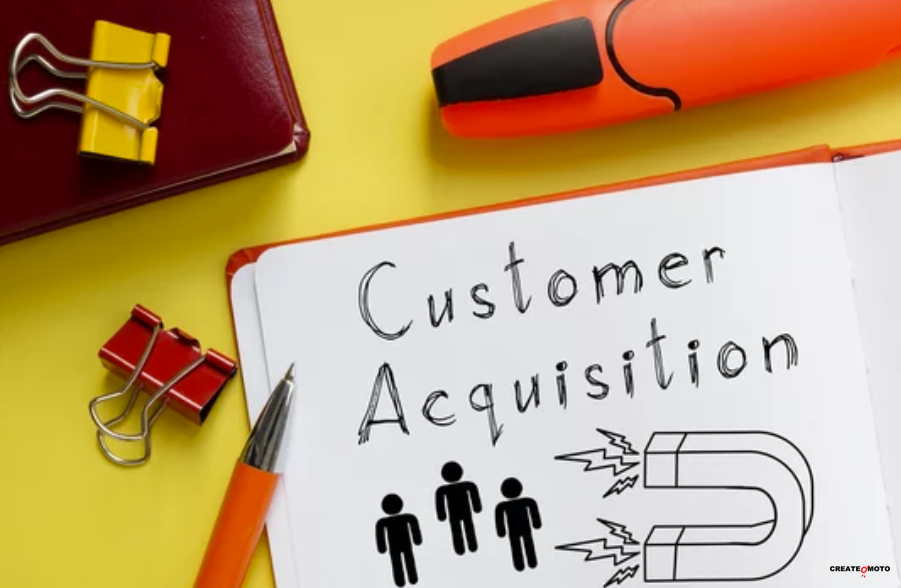
Building a robust customer acquisition strategy isn’t just about attracting buyers; it’s about understanding the journey your ideal customer takes before choosing your product or service. This pathway, often winding and complex, demands a mix of empathy, strategic foresight, and the adaptability to pivot as trends shift. Each stage offers a chance to strengthen the bond with potential customers. Done right, this strategy isn’t only about numbers—it’s the first step toward fostering loyalty, a kind of trust that ultimately drives sustainable growth.
Understand Your Audience’s Core Needs
The essence of customer acquisition lies in uncovering what your audience truly needs. This isn’t always the most obvious desire on the surface; it often requires peeling back the layers. A modern customer isn’t just looking for the best product but is swayed by brand values, alignment with their personal identity, and the ability to solve specific problems in unique ways.
Begin with deep, structured research. Use tools like Think with Google and social listening to gain real-time insights into consumer behavior. Understanding their likes, dislikes, pain points, and preferences lays the groundwork for a strategy that feels more like a relationship and less like a transaction.
Crafting a Clear Value Proposition
A powerful value proposition speaks directly to the core of your audience’s interests, bridging the gap between their needs and your offering. It requires more than just buzzwords or features; it’s about genuinely conveying the why behind your brand. Here, consistency is critical. Every touchpoint—whether an email, social post, or advertisement—should reinforce the value you promise to deliver.
This step is about connecting on a deeper level with your audience. For instance, brands like Airbnb and Patagonia don’t just talk about accommodation or clothing; they frame their service as part of a broader experience or mission. By clearly presenting your unique benefits, your value proposition becomes a guiding star that pulls the right audience into your orbit.
Optimizing the Customer Journey
After defining who your customer is and what your brand represents, you’ll need to design a journey that feels natural and engaging. To many, the phrase “customer journey” may evoke images of linear paths, but in reality, people interact with brands in diverse ways, often influenced by touchpoints across multiple channels.
An omnichannel approach—whether via social media, email, or paid ads—encourages potential customers to engage with your brand on platforms they’re most comfortable with. The journey shouldn’t feel forced; instead, it should evolve based on their interactions, preferences, and responses to past campaigns.
Each phase of this journey, from awareness to consideration to decision, can be fine-tuned. Use HubSpot’s customer journey map tool as a starting point to visualize and customize the stages specific to your business. Over time, you’ll gain insights into how people move through each stage, giving you a foundation for creating impactful, data-backed adjustments to optimize the journey further.
Content That Builds Trust
In an age where customers can find dozens of options at their fingertips, establishing trust is non-negotiable. Here, content is the kingmaker. Well-crafted content does more than inform; it provides value, making potential customers see your brand as a resource rather than simply a seller.
Educational blog posts, insightful videos, and in-depth guides that solve specific problems are prime examples. But this content must be genuine, written with the reader’s needs in mind, not just as a means to sell. Consider using an SEO strategy focused on questions your audience is actively searching for, such as “how to” and “why” queries. Moz’s Beginner’s Guide to SEO is a valuable resource for tailoring your content to your customer’s needs while optimizing for search engines.
Building trust through content also involves consistency in tone, frequency, and transparency. Customers appreciate brands that aren’t afraid to showcase expertise, admit to improvements needed, or share insights on how products are evolving. Over time, this approach encourages your audience to view your brand as an authority, making them more likely to choose you over competitors.
Leveraging Social Proof
Trust is further solidified through social proof—reviews, testimonials, case studies, or even user-generated content that showcases genuine experiences with your product. Social proof acts as validation, reassuring potential customers that they are making a sound choice by choosing you.
Encouraging happy customers to share their stories can be as simple as prompting reviews post-purchase or creating branded hashtags for customers to share their experiences. Partnering with influencers within your industry is another effective tactic, as it allows you to tap into their audience’s trust in them. Just ensure that any endorsements align authentically with your brand, enhancing rather than diluting its reputation.
Utilizing Data for Continuous Improvement
Customer acquisition is not a “set it and forget it” process. It’s a living, breathing part of your business strategy, evolving alongside changes in market trends, customer preferences, and even broader economic shifts. Consistently gathering and analyzing data lets you stay agile, ready to tweak strategies based on real-time insights.
Platforms like Google Analytics provide a wealth of information about visitor behavior on your website, while tools like social media insights give a peek into audience engagement across different platforms. Rather than aiming for immediate perfection, focus on progressive improvements. Experiment with A/B testing on your landing pages, email campaigns, or even product listings. Over time, these incremental changes lead to substantial improvements in how effectively you connect with your audience.
Personalized Engagement at Scale
It’s easy to think of customer acquisition as a volume game: the more people who hear about your brand, the better. But scaling effectively often requires a personalized approach, particularly in the age of customization where a generic message just doesn’t cut through.
Segmentation is your friend here. Break down your audience into specific groups based on behavior, demographics, or even interaction history. Tailoring your marketing messages to these smaller segments—whether through personalized email campaigns, dynamic ad content, or targeted social posts—can make a large-scale campaign feel personal, engaging each individual in ways that matter most to them.
Retention: The Foundation of Sustainable Acquisition
Acquisition doesn’t end when a customer converts. Retention is often the most overlooked component in customer acquisition, yet it’s critical for sustaining growth. Repeat customers tend to spend more and cost less than acquiring a new customer, making it vital to design retention strategies that turn first-time buyers into loyal brand advocates.
A loyalty program, exclusive deals, or simply staying in touch through newsletters with genuinely useful content are all effective ways to maintain this relationship. Ultimately, these efforts don’t just encourage repeat business—they create a cycle where loyal customers amplify your brand through word-of-mouth marketing, becoming active participants in your growth.



0 Comments